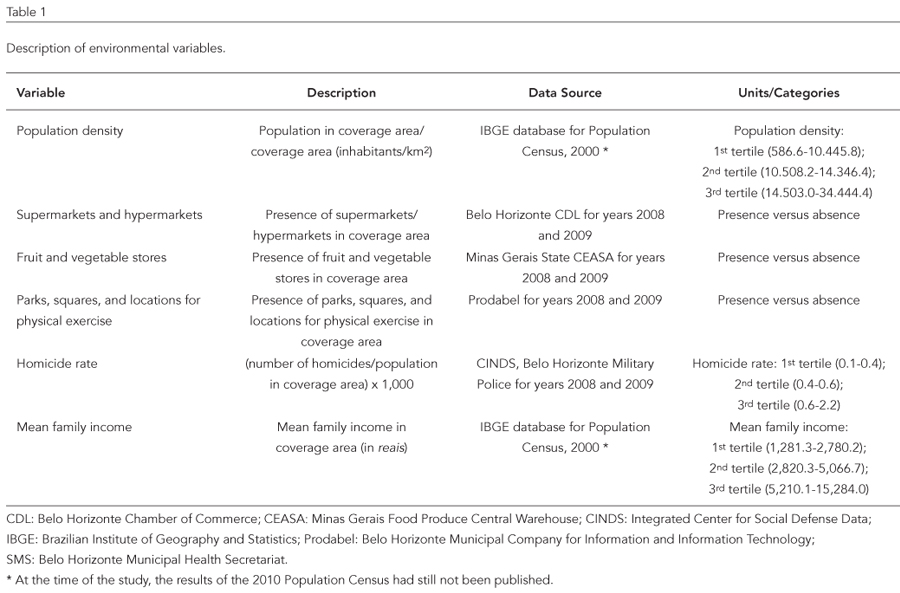The aim of this study was to assess associations between the built environment and social environment and excess weight in an urban population. Participants were selected from the Surveillance System for Risk Factors for Chronic Diseases (VIGITEL). The study used data from the city of Belo Horizonte, Minas Gerais State, Brazil. A total of 3,425 interviews from the years 2008 and 2009 were used. Georeferenced data on parks, squares, and locations for physical exercise, population density, and food stores were used to assess the built environment. Description of the social environment used income and homicide rate for the neighborhood. Environmental variables associated independently with excess weight were population density, presence of parks, squares, and locations for physical exercise, and self-reported presence of locations for physical exercise. The findings show that residential neighborhood characteristics are associated with excess weight in urban adults.
Controlled Environment; Environment and Public Health; Obesity; Overweight




